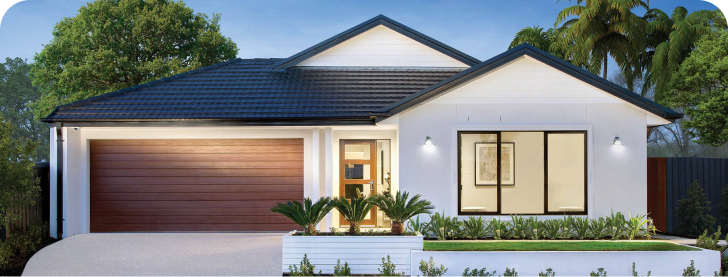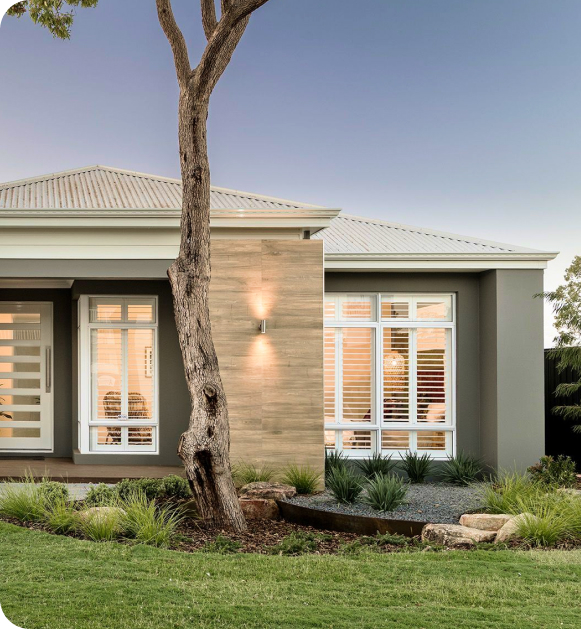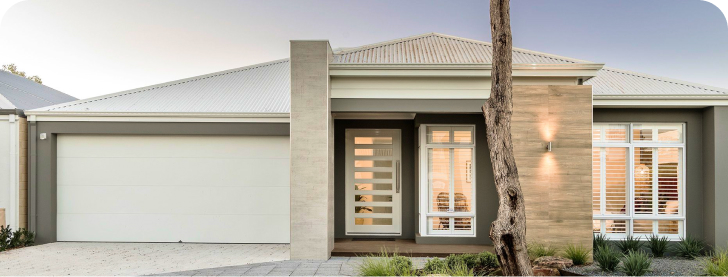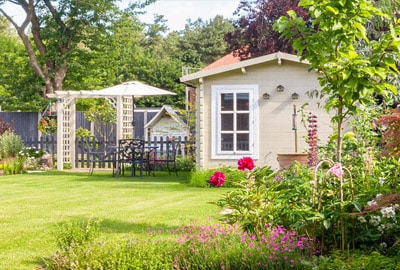
More than a million people in the USA share their living space with their adult children. So, in case you're planning to move your elderly family members to your house, you're not the only one.
But it can be rather hard since it needs to be handled carefully. You'll have to be patient and give your aging parents the possibility to adapt to their new home. In such a situation, an accessory dwelling unit, also known as a granny pod, can be very useful. It's basically a backyard home with all the modern conveniences.
Accessory dwelling units, especially of the detached ADU type, are very popular among American families. This kind of property is used not only as granny pods but also for rental income, as art studios, friends' houses, and so on.
A granny pod, despite its limited square footage, can provide enough space for older adults. This backyard home has a dining room, a bathroom, a bedroom, and a kitchen — shortly, everything that's necessary. In most cases, its interior design is also very pretty and cozy.
But it's even better if such a tiny house has a garden. Growing flowers is a very common hobby among elderly people. Often, it's more than just a hobby — it's a complete style of life. And it's very relaxing and healthy.
Want to create a granny flat with a nice little garden for your aging parents but don't know how to do it? Then, this article is for you! Here, you can learn some valuable tips on how to use more space near accessory dwelling units for a truly happy and healthy life and create a unique granny pod feel.
Accessibility in the garden should be the same as in the accessory dwelling unit itself so that your aging parents can work there with comfort. In particular, they shouldn't have to bend over to planting beds, especially if they have back issues. A great solution to this problem is gardening with raised beds. It will be a lot easier for your elderly loved ones.
What do you need to create a comfortable raised bed garden?
Working with raised beds is a great pastime for elderly people. It's not only pleasant and calming, but also has lots of health benefits.
Paths are one of the main garden elements. They should be not only beautiful but also practical, safe, and easy to navigate. Let's talk about pathways near granny flats, especially wheelchair-friendly ones.
The best materials for granny pod pathways are the following:
The best variant for a person in a wheelchair is small, washed stones. One of the most optimal solutions is resin-bound gravel. They're great at preventing falls, serve for a long time, and never collect rain or dew drops. How to create such gravel? It's simple. Just seal ordinary crushed gravel with resin and let it dry up.
Another amazing material for a pathway is pavers. If they're made of wood, they'll give the space a village vibe. Having been put together closely, they'll cover the path densely, just like bricks. Wooden pavers are rather permeable, which means they are not slippery.
Clay bricks are good for paving a safe pathway. They're well-textured, not slippery, and can immediately adapt to topography changes. Stones, such as sandstone, granite, or flagstone, can help create a nice cobblestone-like pathway. The best option is flagstone.
Stones with a round shape are not recommended for aging people. They're too slippery and thus can be unsafe to walk on. With a wheelchair, moving over them is even harder. So, it's better to avoid them when creating pathways near a granny pod.
A wooden boardwalk is one of the smoothest pathway variants. It's extremely flat, permeable, and non-slippery. But it's harder to construct and maintain than many other pathway types.
Concrete is almost an ideal solution. It's a permeable, smooth, convenient, and low-maintenance material. But it doesn't look very pretty. A concrete pathway can spoil the beauty of even the loveliest lawn or patio. But if it doesn't scare you and your elderly family members, then it's a truly perfect variant!
Unlike concrete, mulch and sand look natural, but they're very high-maintenance and wheelchair-unfriendly. These materials have barely any benefits at all, so we won't recommend them for use on your property.
Some kinds of synthetic turf also seem pretty natural but don't have the downsides of mulch and sand. For example, bonded wood carpet is very erosion-proof and has a special multi-layered system that increases its permeability and helps drain water.
After choosing the pathway material, you'll need to consider how to make it accessible for your loved one.
Here are some tips:
In addition to that, try to make enough space to do the watering properly. Spigots or cans should be placed at a convenient height. Hoses should be kept out of pathways — otherwise, your loved one can stumble over them, or they can make wheelchair movement much harder.
Any outdoor space near granny pods should have comfortable places to sit down and relax. Install a table or two with chairs near the pathways. Place several hanging flowers next to it — or, alternatively, put the table closer to a beautiful flower bed.
If your property is large, you can place a fountain in the background of the table so that the sound of running water will create additional relaxation.
A great option is to use structures that are already there (for example, a garage or your main house) to set the boundaries of the sitting space. Also, these boundaries can be made with the help of various landscaping constructions like a fence, a screen, a trellis, or an arbor.
Neither tables or chairs for your aging parents should have any sharp corners. We've already noted that elderly people's skin is much thinner, so if they hit a corner, it can be much more traumatic for them.
When you're choosing low-maintenance plants for the outdoor space of your granny pod, pay close attention to the conditions you and your loved ones are living in. If it's warm and sunny, the best variant will be full-sun perennials that require lots of natural light. If you have many large trees that give a thick shade, choose a mix of shade annuals and shade perennials.
An amazing low-maintenance option is evergreen shrubs. If your property plot is surrounded by an ugly wall or fence, embellish it with some quickly-growing vines, and it will look way better. For a small patio, a great solution can be a container or hanging plants.
Here are some examples of beautiful, low-maintenance plants that are suitable for a space near a granny pod:
So, it's completely possible to have a whole yard of wonderful plants that will be extremely easy to take care of. That's great, isn't it?
How to create a raised flower bed for a person in a wheelchair? What special features should it have to provide maximum convenience? Let's find out!
The legs' height should be approximately 30″. It will give your loved one the possibility to roll the wheels under the bed. Legs should be fastened by lag screws (also known as lag bolts) in order to be more stable. To install these bolts, you'll have to drill holes for them beforehand.
What is a sensory garden? It's a place with greenery that appeals to every human sense. It's often used for the treatment of dementia, autism, and other neurological conditions. Such a space has a great relaxing effect and is known to improve patients' life. For example, it can stimulate the memory recovery of dementia sufferers, making them remember more things.
There isn't one and only instruction on making a sensory garden. But there are some common guidelines, which we're going to share with you.
When creating a sensory garden, think about how it will be during different seasons. Try to use plant types for every time of the year. And, of course, don't forget that they should appeal to all five senses — that's the whole point. Honeysuckle and lavender will produce great smells, while rosemary and mint can be very pleasant to savor and touch.
Sight is also a sense, so bright flower species should be there too. But on the other hand, it shouldn't be too overwhelming. Place colors carefully and wisely. Separate patches with warm and cool coloration. Also, try to keep those colors during all seasons.
An intergenerational space is a great idea that can bring people of different ages together and strengthen families. But how to create it on your own property?
First of all, such a structure has to:
In addition to a playground for children, such a space should include several amenities to make it more comfortable. For example:
It's needless to say that a multigenerational space needs to fit all the safety rules and regulations.
A water feature is an extremely important thing for a granny pod. The sound of running water is very relaxing for many people. And having your own little fountain is much better than listening to water within the four walls of your bathroom or kitchen room!
Water features can be classified into many types. For example:
Lots of people with granny pods have such a structure on their property lawn. And its popularity is unsurprising. It looks very nice and stylish, and its installation process is extremely easy! Also, it's very compact and won't take up too much room.
This water feature is a truly timeless classic. Who hasn't seen photos and videos of these iconic Japanese fish and hasn't adored their beauty? Now, imagine them on your own property! Wouldn't it be wonderful? To make it even more majestic, add a lovely little fountain to its center.
If your property is too small and you can't have a koi pond, you can substitute it with a beautiful artificial waterfall. Make a path for water using various materials such as stones, concrete, and even fiberglass. Then decorate your waterfall with succulents, grasses, and various flower types.
A waterway is especially suitable for people that have many guests. They will be very impressed as they walk into your living space and see a pool with lots of bubbles at the entrance. It will give them a feeling of calmness and relaxation.
So, as you can see, water features have lots of advantages. They are nice-looking and soothing and make you feel closer to nature. Perfect for older people!
What to do if your loved ones want to engage in gardening, but your property is a really small space, and there's no place for raised garden beds? Luckily, there's a very convenient solution — vertical gardening.
This gardening type has plenty of important advantages:
Now, let's say a couple of words about the structures used in vertical gardening. They exist in many shapes and sizes: arches, tripods, trellises, pergolas, wire cages, gazebos, nets, and bamboo poles. Even a wall or a fence can be used for this purpose.
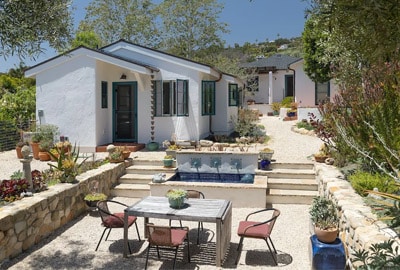
Making a comfortable outdoor living space for seniors requires creating shade. Hot sunlight can be really dangerous for older people, especially those who suffer from various diseases.
But it's useful not only for people but also for greenery. Of course, some plant species love natural light, but for many of them, too much ultraviolet also can be harmful – it can cause sunscaldries and loss of water. A shade helps to keep a plant hydrated and prevent drying up.
There are two main kinds of shades — a shade cloth and an umbrella. The first one is a square-shaped piece of fabric placed on four or more poles. The second is very easy to imagine — a large umbrella-like structure that you may have often seen on beaches and in summer cafés.
High-quality sun protection constructions are extremely efficient — they can block nearly 95% of solar rays. Such a structure can lower the ground's temperature up to 20 degrees!
An accessory dwelling unit is not only a tiny home with a bathroom, a bedroom, some windows, and a cozy interior design style. It's also its surroundings that greatly influence the life of people who live there. The more beautiful and comfortable those surroundings are, the happier its inhabitants will be.
The most comfortable garden type for seniors is a garden with wide pathways, raised plant beds, several sitting places, and lots of low-maintenance plants. You can read more about all of this in the main article.
In addition to numerous health advantages, gardening is very beneficial for the mental state of a person. It helps to calm down, relax, and get rid of anxiety and stress.



